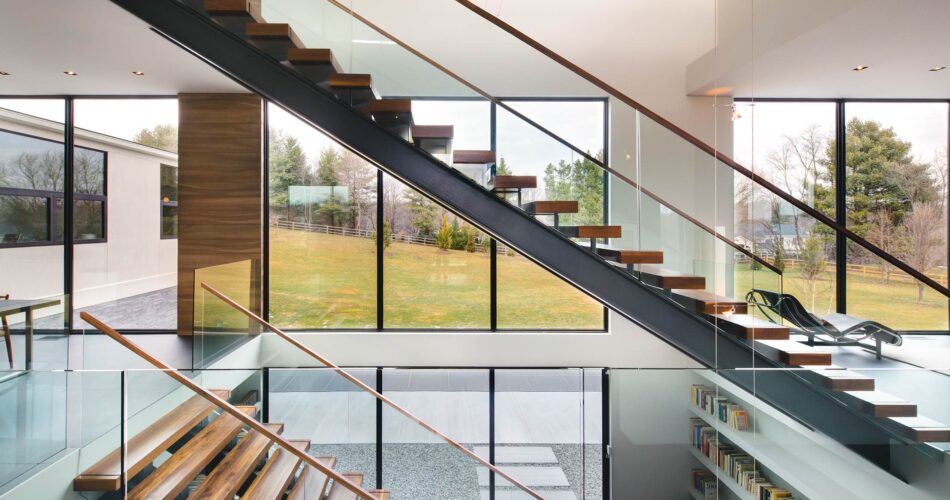Sustainable construction is increasingly becoming a priority in modern architecture, and glass railings are playing a significant role in this movement. Known for their aesthetic appeal, glass railings also offer various environmental benefits, making them a popular choice in eco-friendly building designs. This article explores how glass railings https://artlookglass.com/ contribute to sustainable construction practices.
Enhancing Energy Efficiency
Maximizing Natural Light
One of the primary advantages of glass railings is their ability to maximize natural light in a space. This reduces the need for artificial lighting during the day, thereby lowering energy consumption and the building’s overall carbon footprint.
Thermal Regulation
Modern glass railings can be equipped with energy-efficient glass that helps in regulating indoor temperatures. This type of glass can minimize heat loss during colder months and reduce heat gain during warmer months, leading to less reliance on heating and cooling systems.
Use of Sustainable Materials
Recycled Glass Options
Many glass railings are now made using recycled glass, which significantly reduces the environmental impact associated with their production. Using recycled materials helps conserve natural resources and reduces waste.
Eco-friendly Manufacturing Processes
The process of manufacturing glass railings has also become more eco-friendly. Many manufacturers are adopting practices that reduce harmful emissions and conserve energy, aligning with the principles of sustainable construction.
Longevity and Durability
Durable and Long-lasting
Glass railings are known for their durability. They are resistant to weathering, corrosion, and pests, which makes them a long-lasting option. Their longevity means that they don’t need to be replaced frequently, reducing the demand for new materials and the waste associated with replacements.
Low Maintenance Requirements
Glass railings require minimal maintenance, which not only makes them cost-effective but also environmentally friendly. They do not need regular treatments or coatings that could contain harmful chemicals.
Enhancing Indoor Environmental Quality
Improving Indoor Air Quality
Glass railings contribute to better indoor air quality compared to some traditional railing materials that may off-gas volatile organic compounds (VOCs). Glass is an inert material that does not emit any gases, ensuring a healthier indoor environment.
Promoting Well-being
The transparency of glass railings and the natural light they allow can have a positive impact on the well-being of the occupants. Access to natural light and views of the outside environment are known to enhance mood and productivity.
Contribution to Green Building Certifications
Meeting Green Building Standards
The use of glass railings can contribute to a building’s eligibility for green building certifications like LEED (Leadership in Energy and Environmental Design). Their energy efficiency, use of recycled materials, and contribution to indoor environmental quality are factors that align with these certifications’ criteria.
Conclusion
Glass railings are more than just an aesthetic choice; they are a sustainable option in modern construction. Their ability to enhance energy efficiency, use of sustainable and recycled materials, durability, and contribution to indoor environmental quality make them an excellent choice for eco-conscious building projects. As sustainable construction continues to gain momentum, glass railings stand out as a practical and environmentally responsible choice, aligning both beauty and sustainability in building design.
